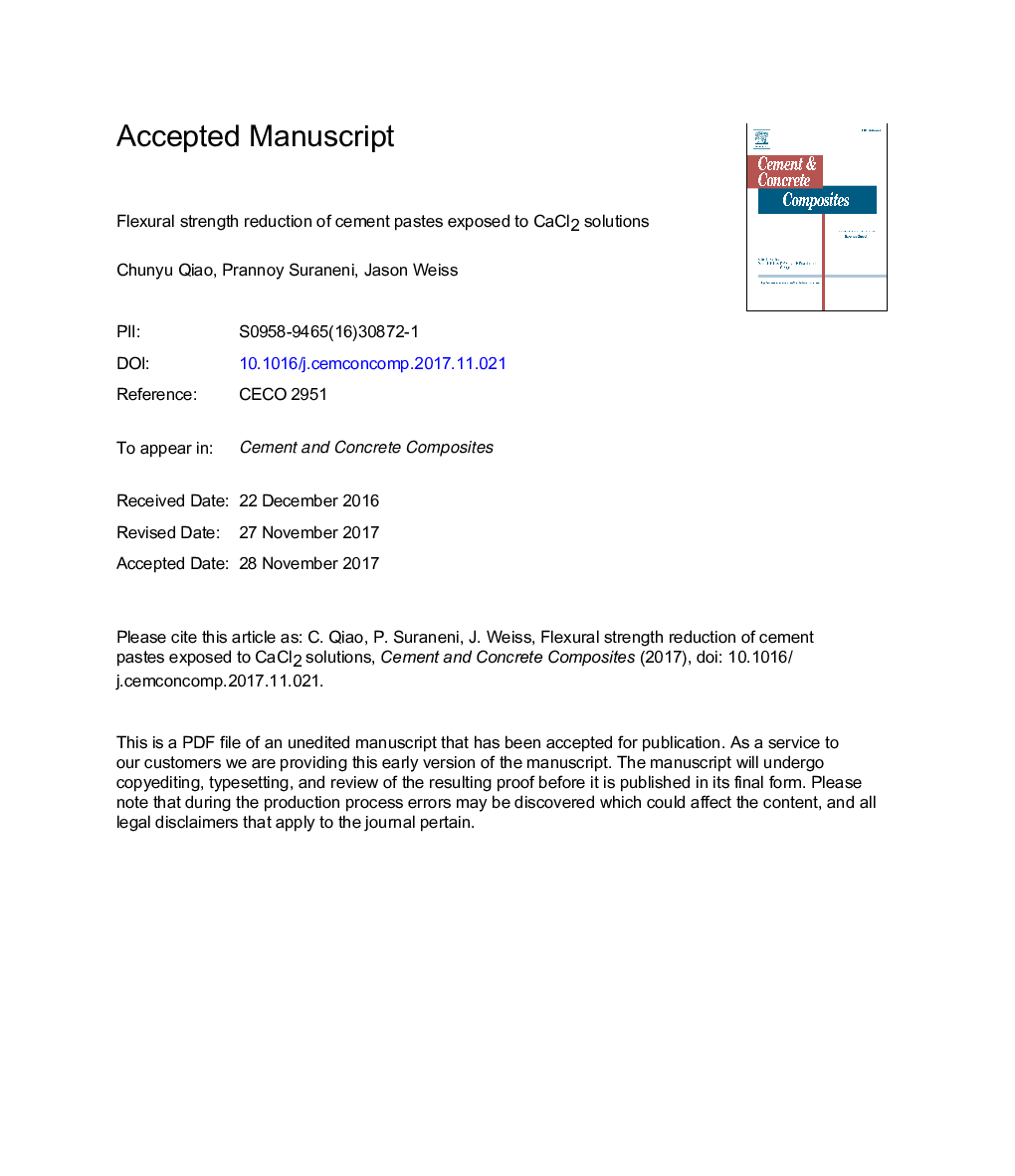| Article ID | Journal | Published Year | Pages | File Type |
|---|---|---|---|---|
| 7884079 | Cement and Concrete Composites | 2018 | 28 Pages |
Abstract
Calcium chloride (CaCl2) can react with calcium hydroxide (Ca(OH)2) to form calcium oxychloride which can reduce flexural strength and damage concrete. This paper aims to characterize the reduction in flexural strength of cement pastes exposed to CaCl2 solutions using the ball-on-three-balls test. The amounts of Ca(OH)2 and calcium oxychloride in the cement paste are measured using thermogravimetric analysis and low-temperature differential scanning calorimetry, respectively. The volume change that occurs as a result of the reactions between the cement paste and CaCl2 is also measured. The reduction in flexural strength increases as the concentration of the CaCl2 solution increases and the exposure temperature decreases. The flexural strength reduction can be mitigated by increasing the amount of supplementary cementitious materials (fly ash) in the cement pastes. Lowering the water-cementitious materials ratio also reduces the flexural strength reduction. The flexural strength reduction is correlated with the amount of calcium oxychloride and the volume change in the cement pastes exposed to the CaCl2 solution. While the flexural strength reduction is believed to be primarily due to the formation of calcium oxychloride, the formation of Friedel's salt and Kuzel's salt also contributes to the flexural strength reduction.
Related Topics
Physical Sciences and Engineering
Engineering
Industrial and Manufacturing Engineering
Authors
Chunyu Qiao, Prannoy Suraneni, Jason Weiss,
